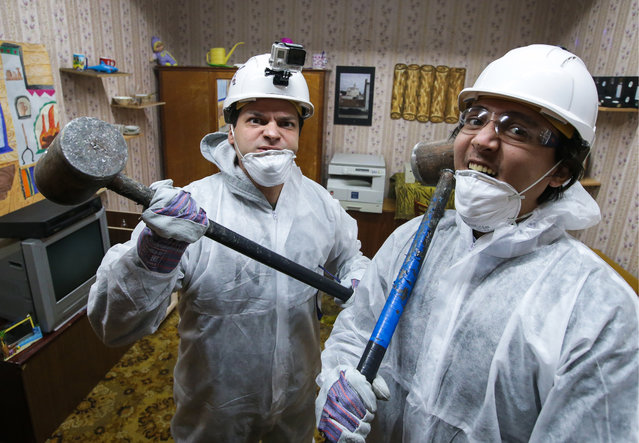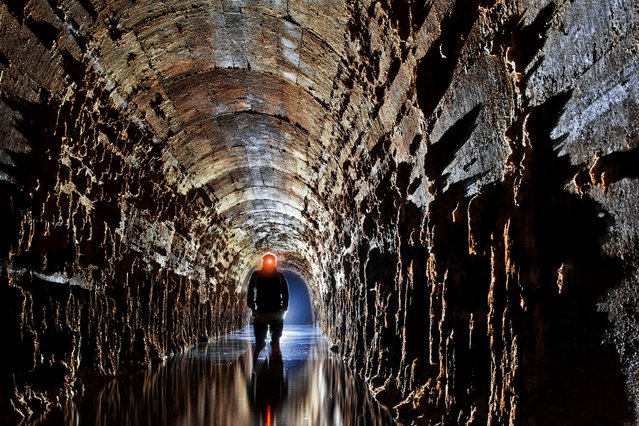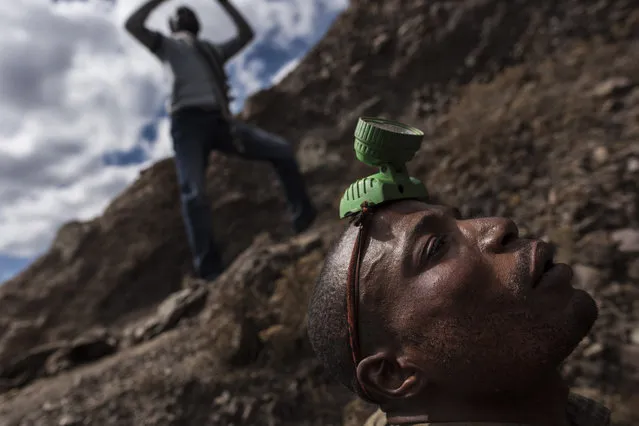
People in hard hats in a rage room in Moscow, Russia on January 27, 2016. The Debosh stress relief service gives its customers an opportunity to smash the rage room up with sledgehammers and bats to relieve stress and tension. (Photo by Artyom Geodakyan/TASS/Barcroft Media)
05 Feb 2016 11:10:00,post received
0 comments







